In the current world where businesses are established and operating in extreme competition, it is essential for small businesses to market themselves if they are to succeed and expand. In most cases, they are cash-strapped, and budgets are tight, so one has to employ approaches that give the maximum rate of return.
In this ultimate marketing plan for small businesses 2025, ten impactful marketing strategies will be discussed.
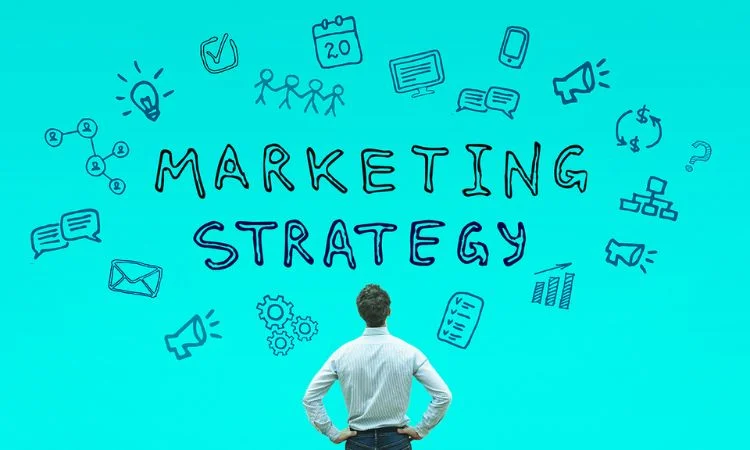
Here Below The List Of Top 10 Business Marketing Strategies for Small Businesses
| S.No | Top 10 Business Marketing Strategies |
| 1 | Design a Professional Integrated Website |
| 2 | Develop and Send-Out Email Campaigns |
| 3 | Leverage Paid Advertising |
| 4 | Build a Strong Social Media Presence |
| 5 | Collaborate with Influencers |
| 6 | Run Attractive Promotions |
| 7 | Manage Your Online Reviews |
| 8 | Seek Lucrative Local Partnerships |
| 9 | Optimize Opportunistically and Optimistically |
| 10 | Get Involved in Your Community |
1. Design a Professional Integrated Website

Indeed, your website is quite frequently the first interface your potential customer may have with your business. It is, in fact, your online shop front, and as such its role cannot be overemphasized.
Here’s why a well-designed website is crucial and how to create one:
Why It Matters:
– Offends no one and at the same time creates an impression of competency and professionalism.
– Offers a single point of reference for all your Internet marketing activities
– Enables your clients to get information on the products and services you offer at any given time of the day.
Key Elements of an Effective Website:
– Easy to use elements and structure
– Mobile responsiveness
– Fast loading times
– Clear calls-to-action (CTAs)
– High-quality, relevant content
– The processes of Internet marketing that are commonly used are search engine optimization (SEO).
2. Develop and Send-Out Email Campaigns
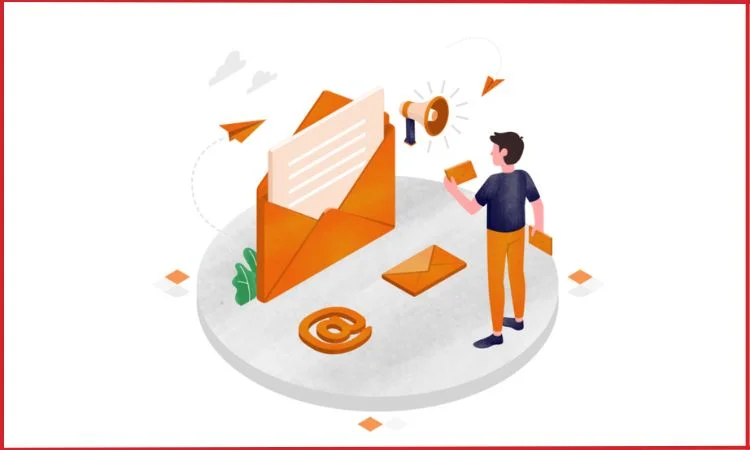
Thus, electronic mail marketing is still possibly one of the most low-cost and effective methods of getting in touch with your audience. Through timely and effective email marketing, you can develop leads and customers’ relations without too much input from you most of the time.
Benefits of Email Marketing:
– Availability of capital to fund the business: Including purchase of equipment, outsourcing and other costs that lessens a high ROI (Return on Investment).
– Communicating them directly with the prospects who would be interested in a particular product or a service.
– The greatest capability in reaching many clients and production of segmented and personalized messages.
– A benefit characteristic of channel mediation is that tangible outcomes can be achieved and changes are easy to monitor.
Steps to Build an Effective Email Marketing Strategy:
a) Grow Your Email List:
– Include opt-in forms to the website
– Provide people with certain incentives (e. g. , ebooks, webinars, discounts) to give their email addresses.
– Ask people to provide emails in full at live meetings or at physical clickable contacts
– Have email entry for contests or sweepstakes
b) Segment Your Audience:
– It is advisable to divide your list based on demographic data such as age, gender, geographical location, or other similar factors, reciprocal data like purchase behavior, and preference data, which consists of interests of the consumers.
– This segment can be then used to generate content specific to requirements of each segment of targeted population.
c) Craft Engaging Emails:
– The first thing about email marketing is writing conscious and greatly persuasive headlines.
– Remember to always make the content short and meaningful.
– Include clear CTAs
d) Set Up Automation:
– Welcome series that will be sent to the new subscribers
– Abandoned cart reminders
– Post-purchase follow-ups
– Schemes targeting the subscribers who have not logged in for the last 60 days
e) Monitor and Optimize:
– Monitor the open rates and CTR as well as responses and sales
– In A/B test different elements of the components that may be combined in order to raise performance.
3. Leverage Paid Advertising
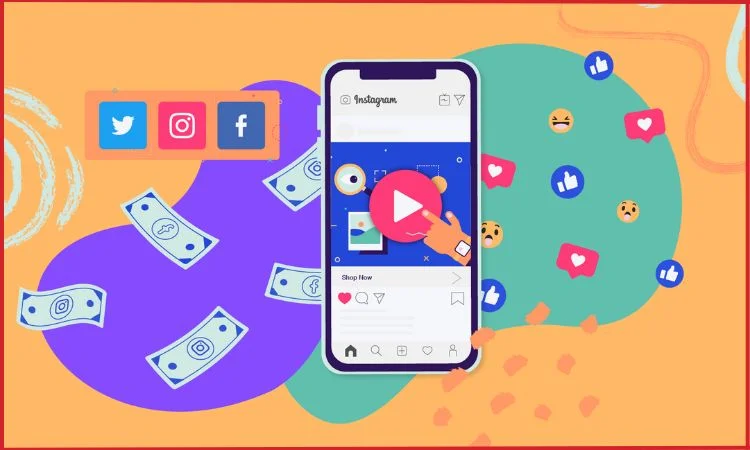
Though it is always good to have people to share your content, paid advertising can give you a better way of visible outlets and also in the generation of leads.
It can be stated that expertise in selection of highly effective social networks and subsequent strict optimization of campaigns would allow cutting costs and reach higher ROI.
Popular Paid Advertising Channels:
– Google Ads: targeted users who are highly likely to engage in the purchase of the specific product or service you provide
– Facebook Ads: Get a highly targeted audience cover both demographics as well as their interests.
– Instagram Ads: Suits presentations of perfect products or services that enhance the use of graphical interfaces.
– LinkedIn Ads: Useful for any business to business retail industries as well as the professional services.
– Pinterest Ads: Proper for all lifestyle, fashion, and home-related affairs.
4. Build a Strong Social Media Presence
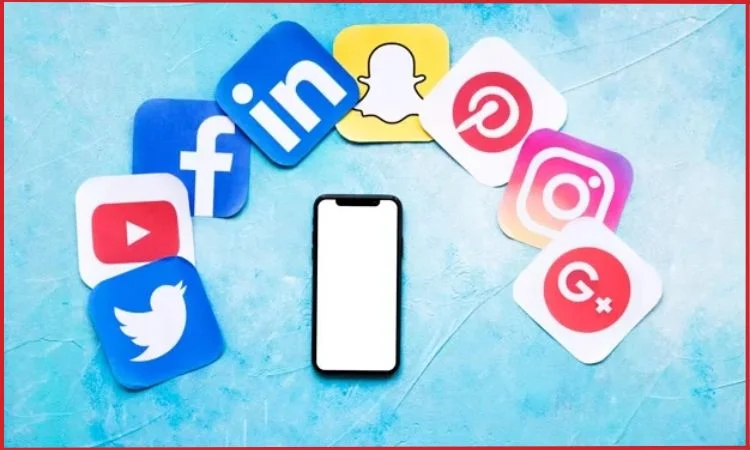
Social media is a perfect tool to reach your audience, gain recognition and engagement among people interested in your product. However, it is important not to go for quantity, that is, to have the company’s page in all the platforms, but to have a good strategy.
Steps to Develop an Effective Social Media Strategy:
a) Choose the Right Platforms:
– Make an effort to find out where on the web your audience hangs out
– Start with one or two platforms to begin with so that one does not try to cover too much ground at one time.
b) Create a Content Calendar:
– Schedule your posts a head
– Post regularly and as often as is possible
c) Engage with Your Audience:
– As a rule, reply to comments and messages as fast as you can.
– Encourage user-generated content
– Polls, contests and question and answer sessions
d) Use Visual Content:
– Posting of quality pictures and videos
– Design infographics or any piece of content in the form of graphics
e) Leverage Platform-Specific Features:
– Take Instagram Stories or Reels for more real-like posts
– Organise Facebook Live sessions as a way of interacting with your audience as they give out real-time feedback.
– Try and engage the right Twitter chats or LinkedIn groups
f) Monitor and Analyze Performance:
– Track impressions (likes, comments, share)
– Make an analysis of your data with the help of analytics tools to understand your target audience
– Give up what is not successful in converting and target people where it has been effective.
5. Collaborate with Influencers

To promote their products and services, many small businesses have appreciated utilising influencer marketing to acquire new clients.
Therefore, by associating your brand with influencers with audiences relevant to the market you are targeting you can leverage on the credibility.
Types of Influencers:
– Micro-influencers (10,000-100,000 followers): Are more engaging and the audiences are highly interested in them and can also be more economical.
– Macro-influencers (100,000-1 million followers): Come with better coverage ranges but potentially costlier.
– Nano-influencers (1,000-10,000 followers): When carefully planned can be very beneficial especially to local players or in specializations.
Steps to Implement an Influencer Marketing Strategy:
a) Identify Relevant Influencers:
– Search for the influencers whose target group is similar to the one you need.
– Influencer identification and analysis can be done by using BuzzSumo or HypeAuditor.
b) Reach Out and Build Relationships:
– Follow their pages before pitching for a cooperation
– The last way that can be adopted in the act of trying to reach out to the target audience is by trying to personalize the messages that will be sent.
c) Define Clear Campaign Objectives:
– Be concrete and individualistic goal (e. g. , enhance the brand recognition factor, lead Website hits, stimulate more sales).
– Define metrics or simply performance indicators, that will address the yardsticks for success.
d) Develop a Collaborative Content Strategy:
– People born of influencers: develop convincing content that will appeal to the target audience
– Make sure that the content of the posts that you are going to publish adheres to your brand’s values and mission.
e) Negotiate Terms and Compensation:
– This will include things such as deliverables, time of delivery and the payment structure that is required.
– This calls for a combination of monetary rewards and barter solutions of providing participant’s products or services.
f) Track and Measure Results:
– Make sure that the coupons used are not general coupons so that the conversion can be tracked properly or make sure that the affiliate links being used are distinct from the others.
– Use engagement metrics and the sales performance data to determine the return-on-investment.
6. Run Attractive Promotions
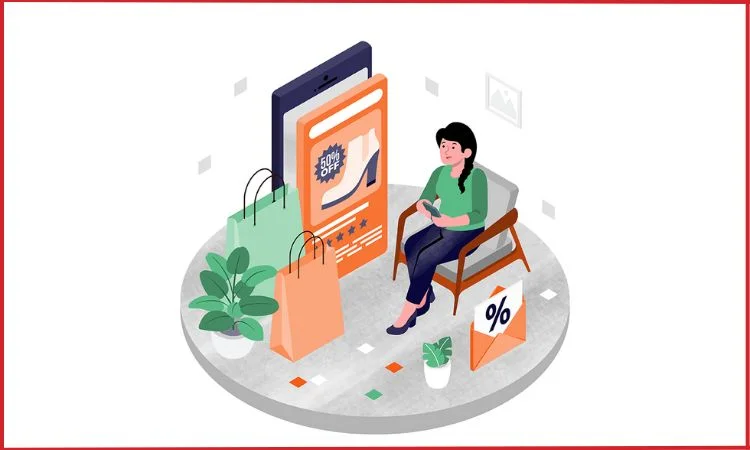
Promotion can be a very effective part of the marketing mix where the firm can target its effort towards new customers and new sales as well as popularize their products and services.
Promotions can also be a way of getting important customer information and enhance your lists of email addresses.
Types of Promotions:
– Percentage discounts
– Buy-one-get-one (BOGO) offers
– Free shipping
– Bundle deals
– Flash sales
– Loyalty program rewards
– Referral incentives
Tips for Successful Promotions:
a) Set Clear Goals:
– Figure out the goals that one would like to set for the given campaign ( e. g,, increase sales, clear old stocks, introduce new customers).
– Establish measurable objectives
b) Choose the Right Type of Promotion:
– Think of your audience and what you would wish to offer to lure them into patronizing them.
– Basically, it’s required to correspond the promotion to the general concept of your marketing campaign.
c) Create a Sense of Urgency:
– Experiment with urgency by promoting a limited amount of special offers.
– Promote limitation (e. g. , “For a limited time only”).
d) Promote Across Multiple Channels:
– Promotions should also be publicized on your website, social media groups/ pages and mailing lists.
– It may also be useful to expand the use of paid to increase reach.
e) Make Redemption Easy:
– In this approach, one has to use simple and clear coupon codes.
– Make sure that your website and the check-out process are ready to handle more customers.
f) Follow Up:
– Remind the users before the completion of the time limit of the promotion.
– Speaking to customers and thanking them for participating as well as requesting them to share their experience and give reviews.
g) Analyze Results:
– Record sales, numbers of customers attracted, and the resultant ROI
– Provide knowledge to use in subsequent publicity
7. Manage Your Online Reviews
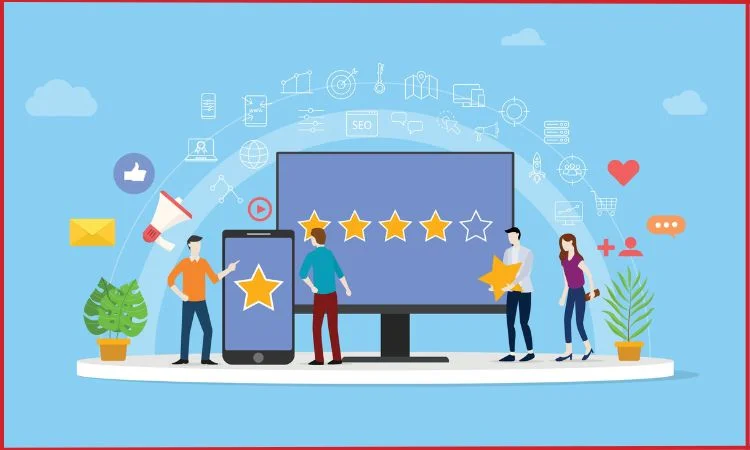
You bet your boots that reputation on social media platforms determines the success of small businesses in the current society. On the one hand, positive feedback helps establish confidence in the product, negative feedback on the other hand, if poorly managed, can harm the business.
Having a feasible plan on how to cope with the reviews is inevitable in the sense that one has to pay close attention to their reputation online.
Steps to Effectively Manage Online Reviews:
a) Monitor Your Online Presence:
– SEO : Run the business name through the Google Alerts Once you’ve effectively established your business on the Internet your next step is to set up an alert for your business name on Google.
– Use the review sites specific to your field of operation (for example Google my Business, Yelp, TripAdvisor)
b) Respond to All Reviews Promptly:
– You can always appreciate every customer and his/her positive feedback on your website.
– The negative comments should be responded to professionally and some of the solutions towards them offered.
c) Encourage Happy Customers to Leave Reviews:
– Follow up customers after they made purchases
– Promotion strategies: Append the review request on receipts, or place it on any visible place like silent signs all over the store.
d) Learn from Feedback:
– Subsequently, to encourage the publicity of your business, it is pivotal to consider reviews to enable you to discover how your business needs to be improved.
– Change should be done according to the perception of the customers.
e) Showcase Positive Reviews:
– Include testimonial on some of the features on your website
– Use social media to retweet good comments (where possible).
f) Address Fake or Misleading Reviews:
– So inform the specific platform that the reviews made are fake.
– In case of need reply in public with the actual truth to possible fake statements
8. Seek Lucrative Local Partnerships

Since other businesses are also looking to promote sales in their establishments, you will find that partnering will ultimately be a mutually beneficial scenario considering how one business will introduce the other to new clients along with presenting different services.
Therefore, when local partnerships are considered, efficiency is possible due to the development of a presence in your community, which can lead to growth.
Types of Local Partnerships:
– Each business can advertise their products to the many clients that are found in similar businesses.
– Ongoing events such as Association and University joint activities or seminar sessions.
– Shared marketing initiatives
Steps to Develop Effective Local Partnerships:
a) Identify Potential Partners:
– Seek out companies which are in similar line of industry as you but not in the same sector
– Think of companies, which will have the same clients or potential clients as your own business.
b) Attend Local Networking Events:
– Attend conventions and expositions of your trade or buy from your local chamber of commerce.
– Attend an industry specific meetup or small business group
c) Propose Mutually Beneficial Collaborations:
– Always spell out what will be in it for both of you
– Before stepping into actual partnerships, find simple, minimal risk projects that may solidify this trust.
d) Create a Partnership Agreement:
– People involved on the active role should clearly provide, determine and describe the expected duties, obligations, tasks and liabilities of each concerned party.
– Explain by what standards the level of success is going to be determined and the intended way of disseminating the results.
e) Promote the Partnership:
– Make an announcement of the partnership to your respective target market
f) Track and Evaluate Results:
– Check the effects on conversion, traffic, or any other target that is considered essential for business achievement.
– Daily provide feedback and information to your partner on challenges and achievements
9. Optimize Opportunistically and Optimistically

The market place is dynamic and what seems to be successful at a given time may not be the same success the next time round. Small businesses should always be receptive, and able to adopt new strategies in the light of new possibilities and threats as they evolve.
Tips for Continuous Optimization:
a) Stay Informed:
– Read blogs and news of the industry you are in or want to get in.
– Participate in webinars or conferences in other to be acquainted with common practices
b) Regularly Review Your Analytics:
– Pay attention to the number of visitors, to the rate of converts, and other comparable parameters
– Google Analytics and other similar tools should be harnessed in order to understand the behaviour of the customer.
c) Be Willing to Experiment:
– Restrict a certain percentage of your marketing budget for experimentation with fresh marketing techniques
– As part of the continuous improvement of the communication approaches, the use of A/B testing should be adopted.
d) Embrace Change:
– Always be ready to change your tactics in the process or in a particular stage.
– Appreciate the challenges and look at them as a possibility to advance and create a new breakthrough.
10. Get Involved in Your Community

The general public will develop consciousness that your company exists and aggressively advocate it each time you prove that you are interested in the welfare of the society. Seek opportunities to volunteer and document results on your posts on any social media platform.
If you donate something as simple as pencils to a school fundraiser and your donation has your company logo, this gives you the exposure you need with new customers because the t-shirts you donate will be carrying your logo around.
The record of how new strategies are conducted will show what is most effective. If you modify many aspects simultaneously, you will not realize which change is beneficial or adverse to engagement.
Conclusion
Implementing these ten business marketing strategies can significantly boost your small business’s visibility, customer engagement, and ultimately, your bottom line. Remember that success in marketing often comes from consistency, adaptability, and a willingness to learn from both successes and failures.
Start by focusing on the strategies that align best with your business goals and resources, and gradually expand your efforts as you see results.
By building a strong online presence, leveraging email marketing, utilizing paid advertising wisely, engaging on social media, collaborating with influencers, running strategic promotions, managing your online reputation, fostering local partnerships, and continuously optimizing your approach, you’ll be well-positioned to grow your small business in 2025 and beyond.














